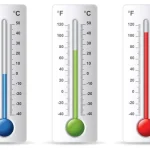In web development, using frameworks such as PrimeVue is a great way of getting started. But what if you want to customize the look of your components? The default styles might not be what you’re looking for, but thankfully there are some great ways to override them and get your app looking exactly how you want. In this article, we’ll take a look at Override CSS Style in PrimeVue.
Introduction to PrimeVue
PrimeVue is the premier Vue.js UI component library for building awesome apps fast. With its rich set of customizable components, it’s a developer’s dream. Shocking blue text on all caps yellow background. However, when it comes to the default styles, all those options may not fit your brand guidelines or design goals.
Understanding CSS Style in PrimeVue
Before we dive into overriding styles, let’s understand how CSS works within PrimeVue.
Default Styles
By default, PrimeVue styles the components using CSS it applies itself, and that’s fine if you just want something that looks polished and works. But it also gets in the way if you want to do something different.
Importance of Customization
Styling cannot be avoided in branding and user experience. A consistent design can make your application easier to use and more unique.
Preparing Your Environment
To get started, you’ll need to set up your environment properly.
Setting Up CSS Style in PrimeVue
Before we begin, make sure you have a Vue.js application running. Create one using Vue CLI: 1.
Vue create my-project
Next, install PrimeVue and its dependencies:
npm install primevue primeicons
Installing Dependencies
Don’t forget to install the necessary styles:
npm install primevue/resources/themes/saga-blue/theme.css
npm install primevue/resources/primevue.min.css
npm install primeicons/primeicons.css

CSS Methodologies
Now that you have PrimeVue set up, let’s discuss different methodologies for overriding styles.
Using Scoped Styles
If you’re using components and want your styles to apply only to certain components, you can use scoped styles in your Vue single-file components (SFCs) by adding the scoped attribute to your <style> tag:
<template>
<Button label=”Click Me” class=”my-custom-button” />
</template>
<style scoped>
.my-custom-button {
background-color: #4caf50; /* Custom green color */
}
</style>
Global Styles
For more general changes, you might need global styles. Put these in your main CSS file (though be careful because they can have an effect on more than one component).
Techniques to Override CSS Style in PrimeVue
Let’s dive into specific techniques for overriding CSS.
Using Custom Class Names
One easy way to override styles is with custom class names. You can add a custom class to any PrimeVue component:
<Button label=”Click Me” class=”my-button” />
Applying Custom Classes
Define your styles in your CSS file:
.my-button {
background-color: #ff5722; /* Custom orange color */
color: white; /* White text */
}
Utilizing ! important
In some cases, you might need to use! important to ensure your styles take precedence:
.my-button {
background-color: #ff5722 !important;
}
Risks of Using! important
However, !important will solve specificity problems only if you overuse it. As much as possible, you should limit its use to the times you need your styles to override everything else.
Overriding with Inline Styles
You can also override styles with inline styles, though this is less common as it can create more noise in your templates:
<Button label=”Click Me” :style=”{ backgroundColor: ‘#ff5722’, color: ‘white’ }” />
Leveraging CSS Variables
CSS variables offer a powerful way to customize your styles dynamically.
Defining Variables
You can define CSS variables in your global styles:
: root {
–primary-color: #ff5722; /* Custom primary color */
}
Utilizing Variables in Components
Then, use these variables in your component styles:
.my-button {
background-color: var(–primary-color);
}
Examples of CSS Overrides
Let’s look at some practical examples.
Button Component
Imagine you want to customize a PrimeVue button:
<Button label=”Custom Button” class=”custom-button” />
.custom-button {
background-color: #007bff; /* Custom blue */
border-radius: 8px; /* Rounded corners */
color: #fff; /* White text */
}
DataTable Component
You might also want to override styles in a DataTable:
<DataTable :value=”data” class=”custom-datatable”>
<!– Columns –>
</DataTable>
.custom-datatable .p-datatable {
border: 1px solid #ccc; /* Custom border */
}
Best Practices for Overrides CSS Style in PrimeVue
When overriding CSS Style in PrimeVue, following best practices can save you time and headaches.
Consistency in Design
Keep a consistent form by using a defined color palette and typography across your app.
Performance Considerations
Pay attention not only to the semantics of your CSS but also to its performance implications. A large CSS file will affect the performance of your application, so you should use tools like CSS minifiers and optimizers.
Conclusion
With some knowledge of the default PrimeVue styles, the right approach and best practices, you can customize PrimeVue to create an application that’s branded to meet your needs without any custom CSS. By exercising restraint, you can walk the line of being custom versus maintainable – making your styles and forms work for users, not against them.
FAQs
Q1: Can I use CSS preprocessors like SASS with PrimeVue?
Yep, you bet! PrimeVue takes SASS or LESS, so you can use variables and nesting.
Q2: How can I ensure my CSS overrides do not affect other components?
Because using scoped styles is the best way to limit the scope of your styles!
Q3: What if I want to override PrimeVue themes?
PrimeVue themes can be customized by editing the theme CSS files, or by creating a new theme on top of the existing ones.
Q4: Is there a way to reset PrimeVue styles globally?
You can start with a reset CSS file that sets the initial styles for all components, and apply your own styles on top from there.
Q5: How do I test my CSS overrides effectively?
Use browser developer tools to inspect elements and live-change styles. Do this so you can preview things before committing them to your code.
Also Read:
Fantasy Team Name Generator Football

2 thoughts on “How to Override CSS Style in PrimeVue: Expert’s Solution In 2024”